One of Ubud’s lesser-visited sites is Petulu Bali Village, famous for being the nesting site for thousands of white herons that flock to the area every evening in spectacular fashion.
• About Petulu
• Tips for Seeing the Herons
• The Myth of Petulu Village
About Petulu Village
As you walk or drive around Bali, you are bound to see birds gliding smoothly in formation above the tree line; or the same birds stalking through the muddy waters of the rice fields pecking for worms as the farms plough for the next season. These exquisite birds are white herons, locally known as kokoan, and are very much a part of the rich tapestry that makes up the island’s natural scenes.
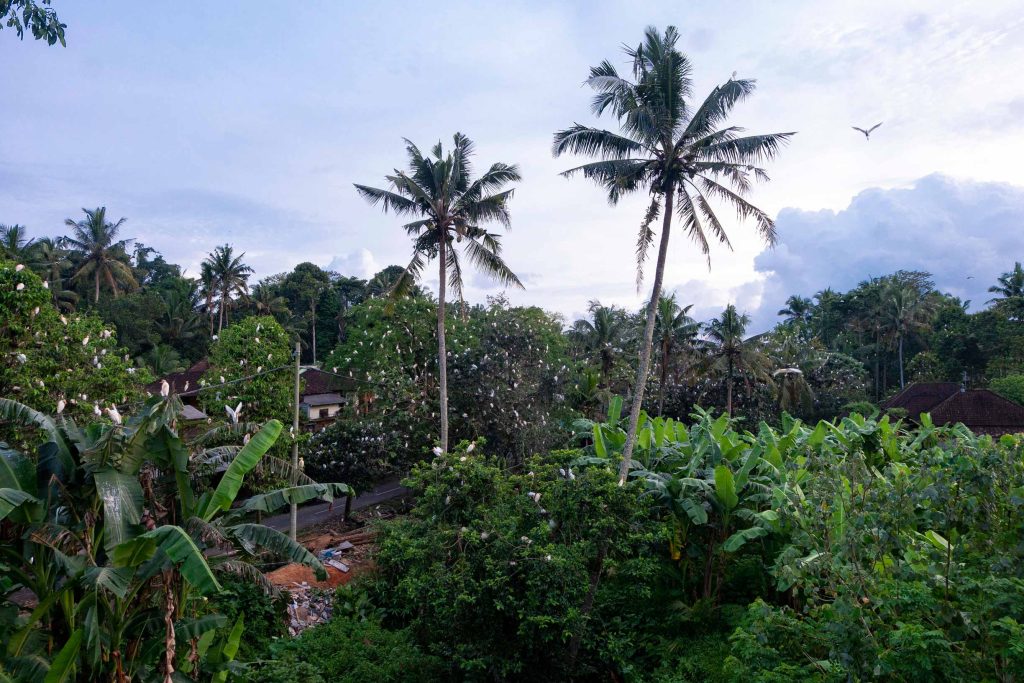
The herons are ubiquitous in Bali, soaring gracefully through the skies, sometimes alone, sometimes in a v-formation, as they scour flatlands for food. They are found most commonly on the rice fields accompanying the ploughing buffalos basking under the sun, waiting for the farmers to churn up the soil, revealing the delicious grubs from beneath the earth’s surface. The buffet is now open! Whilst these birds are found across the island, a large number of them find refuge at night in the comforts of one particular heron hotspot, Petulu Village.
Just north of Ubud, around a 15-minute drive towards the popular Ceking Rice Terraces of Tegallalang, Petulu Village (or Desa Petulu) sits in quiet refuge on the outskirts of Ubud town’s daily bustle. Slow and sleepy, with a single road running through its centre, Petulu still retains the structure and atmosphere of a traditional Balinese village, with classic Balinese compounds on either side. Many of the residents of Petulu were skilful artisans, their carving skills often on display on the roadside of Tegallalang; though some will work on nearby farms, others in the tourism industry as well.
However – and with no offence meant to the people of Petulu! – it isn’t these residents that makes the village an interesting destination. Petulu is also home to an impressive colony of white herons, who share the village streets and housing compounds with their human neighbours.
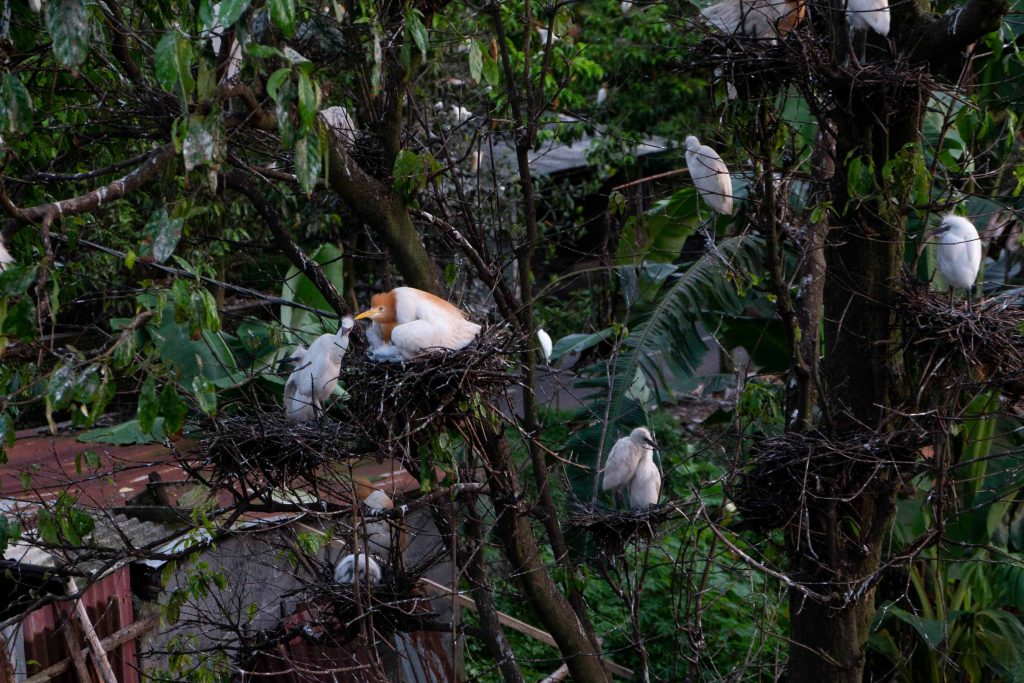
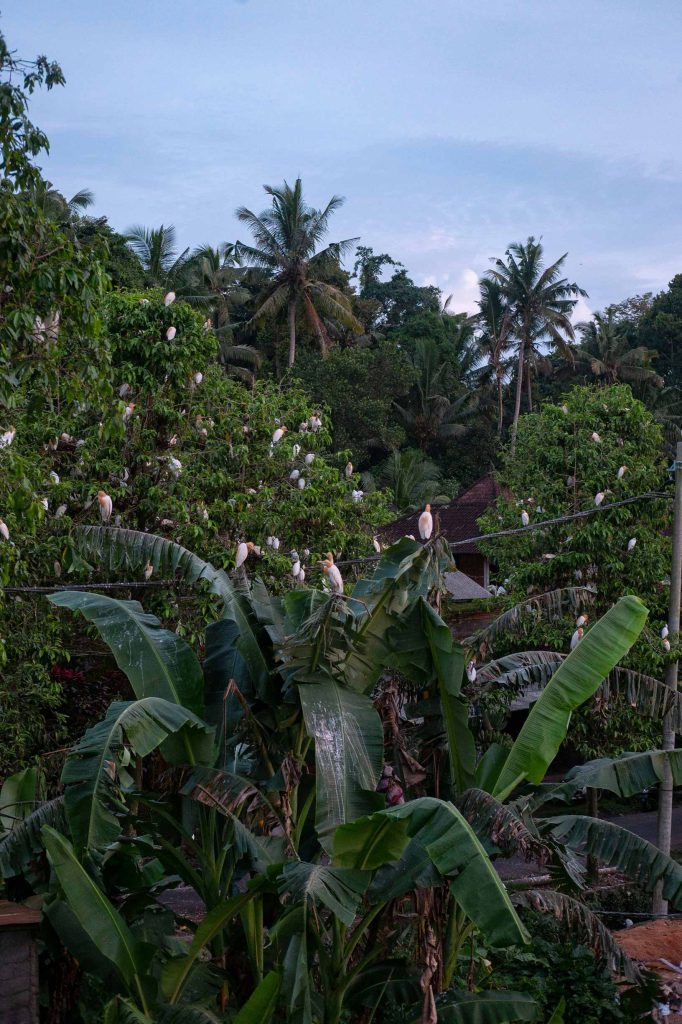
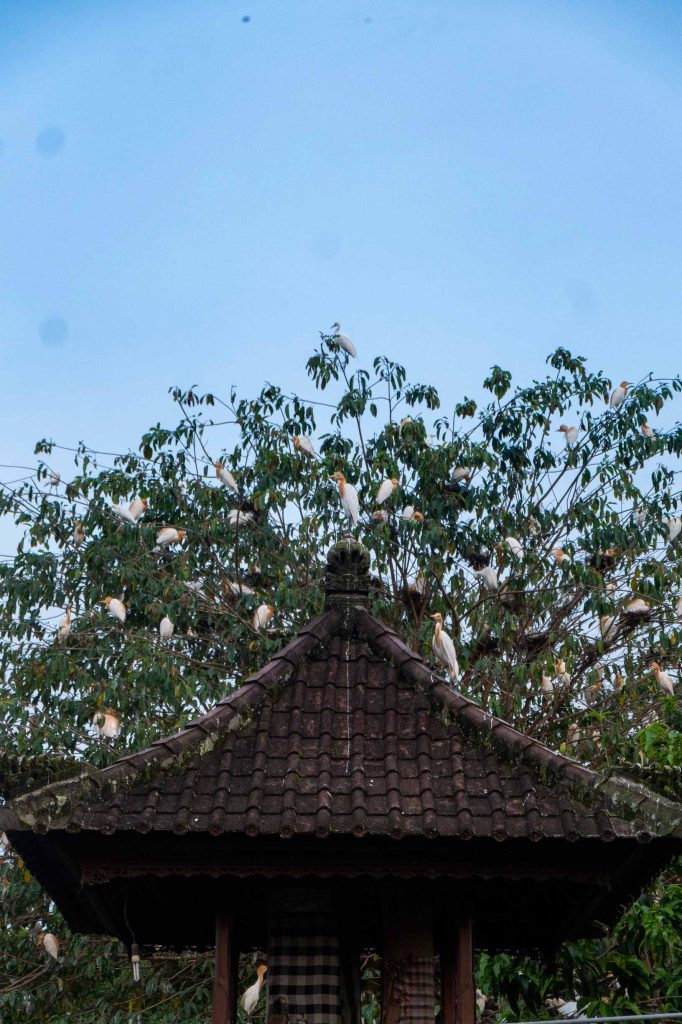
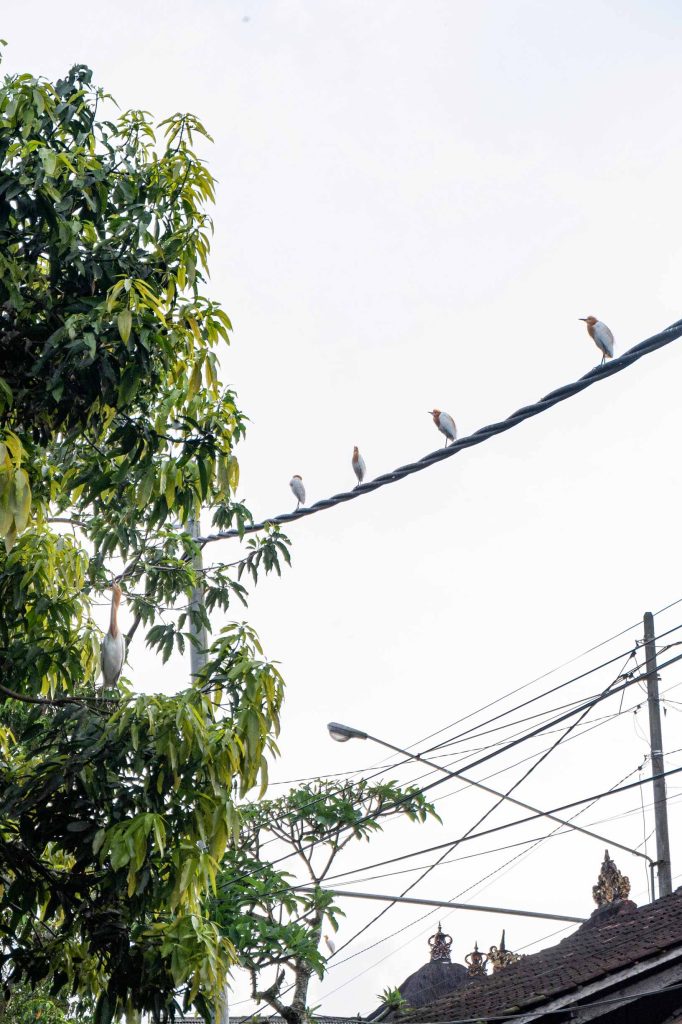
Every afternoon, peaceful Petulu erupts with life as swarms of squawking herons make their evening commute home. At dusk, the fiery sunset skies above the village are filled with the flapping silhouettes of the returning birds. Like a plague of bats leaving a cave, the herons come to settle in Petulu en masse for the night.
The birds flock here because of a specific tree found here, known locally as pohon bunut wot, a type of fig (ficus benjamina). It is found lining both sides of the village street as well as in the local housing compounds. The local villagers shared that the birds rest on these trees as the branches are strong but very flexible, making them great for nests.
A study of the area in 2017 showed that Petulu Village was home to approximately 4,319 herons;with a total of 1,241 heron nests found in 144 trees. After most of the birds have found a comfortable branch to rest on, their soft white and shining amber feathers create quite a contrast against the rich and dark greens of the tree tops, and so their impressive numbers are quite visible from a good vantage point.
Tips for Seeing the Herons
It’s best to arrive before sunset, at around 5pm, so that you can be there to witness the herons all flying in. By around 5.45pm many have already found a place to nest in the trees.
You can park on the north-side of the village, where there is a ticket booth next to a parking area. During the pandemic the ticket booth has been closed and no entry fee is requested. You can walk south down the road and in the middle of the village you will find a great viewing platform on the first floor above a community centre (a sign is shown in front of the centre). From here you can see the herons swarming in above the towering palm trees that backdrop a vista of farms and rice fields.
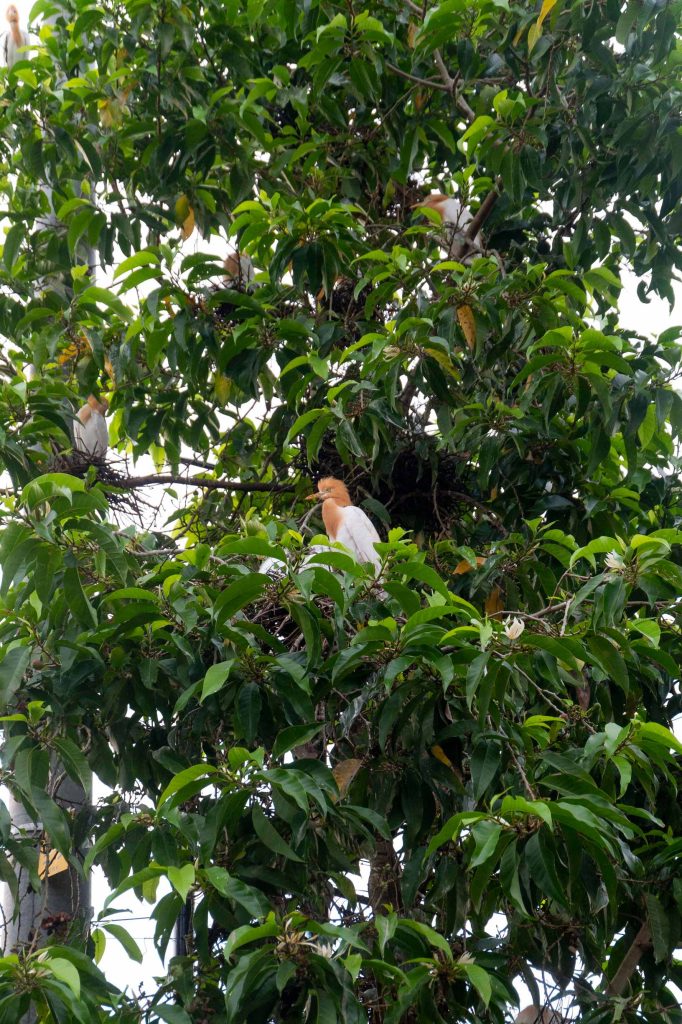
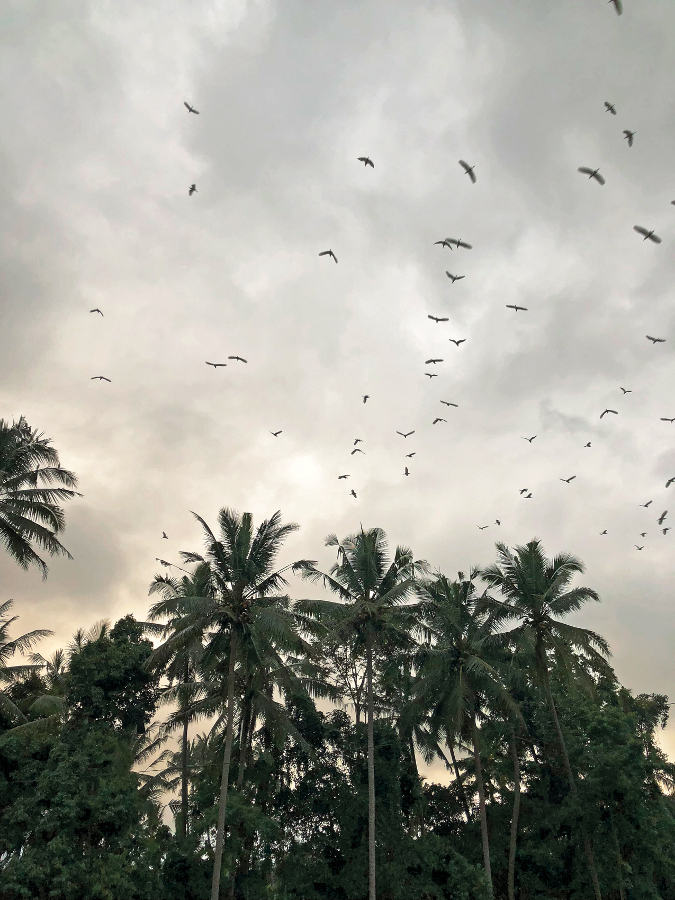

After all of the herons have swarmed in, you can really witness the full volume of their population as their white bodies paint dots between the branches of the bunut wot trees; watch them as they scramble for the best sleeping spot! You’ll also find a few herons on the street, having fallen from their nests.
Now, as you walk back to the parking area you can see the herons in the trees all through the village, great photo opportunities, but be careful as the path you take is at risk from projectiles from above! Yes, you may notice the sharp smell of ammonia and the stained roads, as the mass of herons relieve themselves of their droppings too… so, look up with caution!
The Myth of Petulu Village
There is a belief that these herons are the reincarnation of thousands of Balinese who were slaughtered in a massacre during the Indonesian Communist Party regime in the 60s, when an anti-communist witch hunt swept the nation. According to the villagers, the myth is that these ‘souls of the slaughtered’ appeared in their village exactly one week after a failed attempted communist coup in September, 1965. No herons had been seen in Petulu before then, and the birds have been coming every afternoon since. Being a particularly sensitive moment in Indonesian history, talks and publications of this story are swept under the rug.
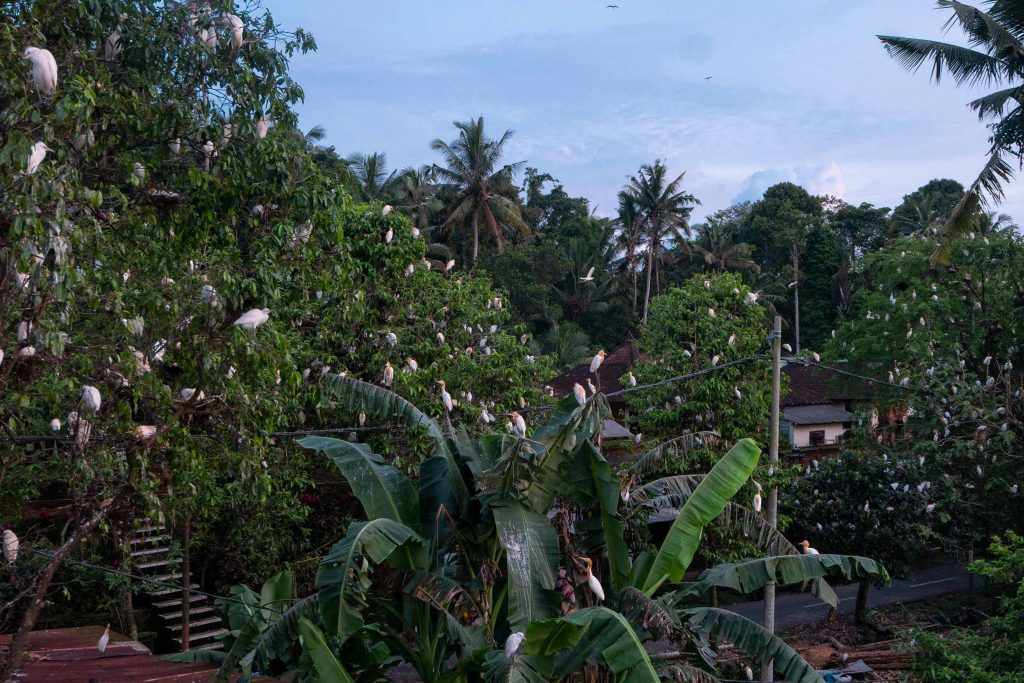
A more official legend of the herons goes as follows: It was the 25th of October, 1965, when all the villagers of Petulu held a big ceremony called Ngusa Benining, a ritual to purify their neighbourhood from negative forces. Later that same year, on the 7th of November, the villagers’ many prayers calling out for peace were answered by the arrival of thousands of white herons, an animal considered to be holy and blessed. Excitement filled the air when these birds descended from the sky; and as respectful and grateful as they always were, the villagers held a Pemagpag ceremony to welcome the new inhabitants in their village.
The herons only occupy the trees by the roadsides stretching from the village temples Pura Desa and Pura Puseh in the north, to the Pura Agung Basukih temple in the south – around 400m long. Ever since their first appearance in the village, these herons have never built a nest in any areas at the back of the villagers’ home for it is believed that the back part of a house is meant for unclean facilities – such as toilets.






